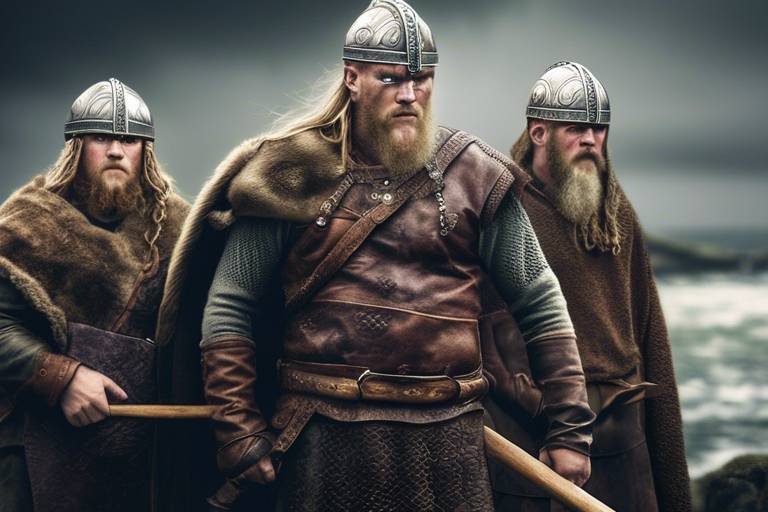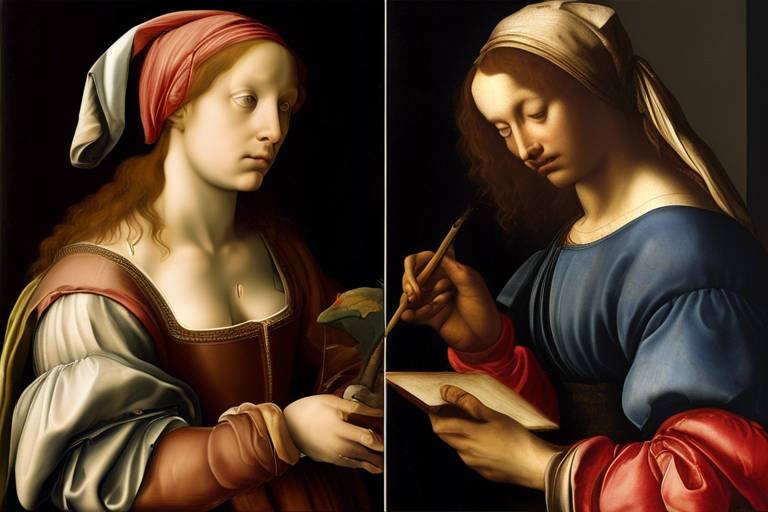The Artistic Heritage of the Vikings
The Vikings, often portrayed as fierce warriors, had a rich and diverse artistic heritage that often goes overlooked. Their artistic legacy extends beyond their conquests and battles, encompassing intricate metalwork, expressive woodcarvings, and distinctive storytelling through art. These artistic expressions provide a unique insight into the culture, beliefs, and creativity of the Viking civilization.
One of the most fascinating aspects of Viking art is the use of runestones. These stones served as historical markers and communication tools, adorned with intricate carvings and inscriptions that offer glimpses into Viking society and beliefs. Each runestone tells a story, preserving a piece of history through art that has stood the test of time.
Another remarkable feat of Viking craftsmanship lies in their shipbuilding and navigation skills. The Vikings' mastery of ship construction revolutionized maritime travel, allowing them to embark on legendary expeditions and raids across Europe and beyond. Their ships were not merely vessels but reflections of their engineering prowess and seafaring expertise.
Delving into the world of Viking age jewelry reveals a treasure trove of exquisite craftsmanship and symbolism. From intricately designed brooches to elaborate necklaces, each piece reflects the skilled metalworking techniques and cultural aesthetics of the Vikings. These jewelry pieces were not just adornments but symbols of status, wealth, and artistry.
Viking art also prominently features mythological themes, showcasing the gods, legends, and sagas that defined Norse mythology. Depictions of deities like Odin and Thor, as well as scenes from epic sagas, illustrate the spiritual beliefs and storytelling traditions of the Vikings. Through art, they immortalized their myths and legends for future generations to admire.
Runes, the ancient writing system of the Vikings, played a crucial role in their art and communication. Runes and inscriptions adorned various objects, conveying messages, names, and stories in a unique script that reflected Viking literacy and culture. Deciphering these inscriptions unveils a world of knowledge and history preserved in stone, wood, and metal.
Animal motifs, such as dragons and wolves, held deep significance in Viking art. These animal motifs symbolized strength, protection, and mythical connections, adorning their decorative designs and storytelling imagery. Each animal depicted in their art carried layers of meaning, adding depth and symbolism to their visual narratives.
Appreciating the intricate beauty of Viking woodcarvings unveils a world of artistic mastery and craftsmanship. From ornate furniture to detailed architectural elements, their woodcarvings showcased a level of skill and artistry that transcended mere functionality. Every carving told a story, whether through intricate patterns or symbolic designs.
Lastly, Viking textile art offers a glimpse into their creativity and craftsmanship in weaving and embroidery. Intricately woven patterns, colorful tapestries, and embroidered garments adorned their homes and bodies, reflecting their attention to detail and artistry in everyday objects. Textile art was not just a practical necessity but a form of artistic expression for the Vikings.
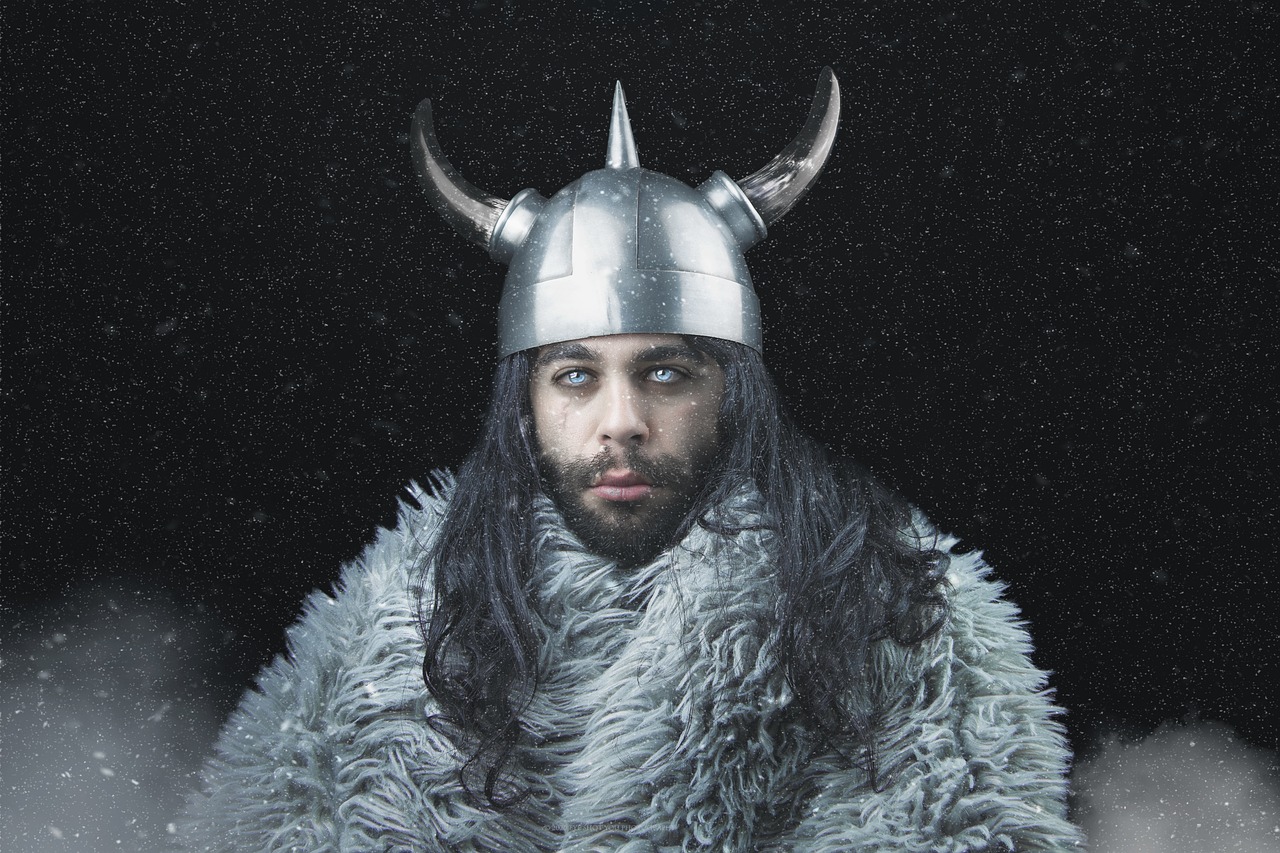
Viking Runestones
Viking runestones stand as enduring testaments to the rich history and culture of the Vikings. These remarkable stones, often intricately carved with ancient symbols and inscriptions, served as more than just markers; they were a form of communication, conveying stories, beliefs, and messages from one generation to the next. Each runestone tells a unique tale, offering insights into the daily lives, journeys, and spiritual beliefs of the Viking people.
Carved with precision and care, Viking runestones were not merely decorative objects but served practical purposes in conveying important information. These stones were strategically placed in prominent locations, such as along trade routes or near settlements, ensuring that their messages reached a wide audience. Through the art of runic inscriptions, the Vikings immortalized their stories, honored their ancestors, and communicated their values to future generations.
One of the fascinating aspects of Viking runestones is the diversity of their designs and meanings. Some stones feature intricate carvings of mythological figures, while others display detailed depictions of daily life. The runes inscribed on these stones were not just letters but symbols imbued with cultural significance, representing concepts like strength, protection, and wisdom.
As we unravel the mysteries of Viking runestones, we gain a deeper understanding of the complexities of Viking society and the importance they placed on preserving their heritage. These ancient artifacts serve as windows into a world of exploration, conquest, and spiritual beliefs, inviting us to delve into the fascinating realm of Viking culture through the artistry of their runestones.

Shipbuilding and Navigation
Viking shipbuilding and navigation stand as a testament to the ingenuity and skill of the seafaring warriors. The Vikings crafted sturdy and swift longships that were the key to their successful exploration and conquests. These ships, known for their sleek design and shallow draft, allowed the Vikings to navigate both open seas and shallow rivers with ease, giving them a strategic advantage in their maritime endeavors.
The construction of Viking ships involved a meticulous process that combined traditional woodworking techniques with innovative designs. The use of overlapping planks, known as clinker construction, provided flexibility and durability to the vessels, ensuring they could withstand the rigors of long journeys and tumultuous waters. Additionally, the inclusion of a removable mast and sail allowed for efficient propulsion, enabling the Vikings to harness the power of the wind for swift travel.
Navigation played a crucial role in the success of Viking expeditions, with skilled navigators using a variety of methods to traverse the seas. By observing celestial bodies such as the sun, moon, and stars, as well as utilizing landmarks and natural phenomena, the Vikings were able to chart their course with remarkable accuracy. Their mastery of navigation techniques allowed them to reach distant lands, establish trade routes, and expand their influence across vast territories.
Furthermore, the Vikings' knowledge of tides, currents, and seasonal weather patterns enabled them to plan their voyages strategically, maximizing their chances of reaching their destinations safely and efficiently. Through a combination of technological innovation, navigational expertise, and sheer determination, the Vikings became renowned for their seafaring prowess, leaving a lasting legacy in the annals of maritime history.
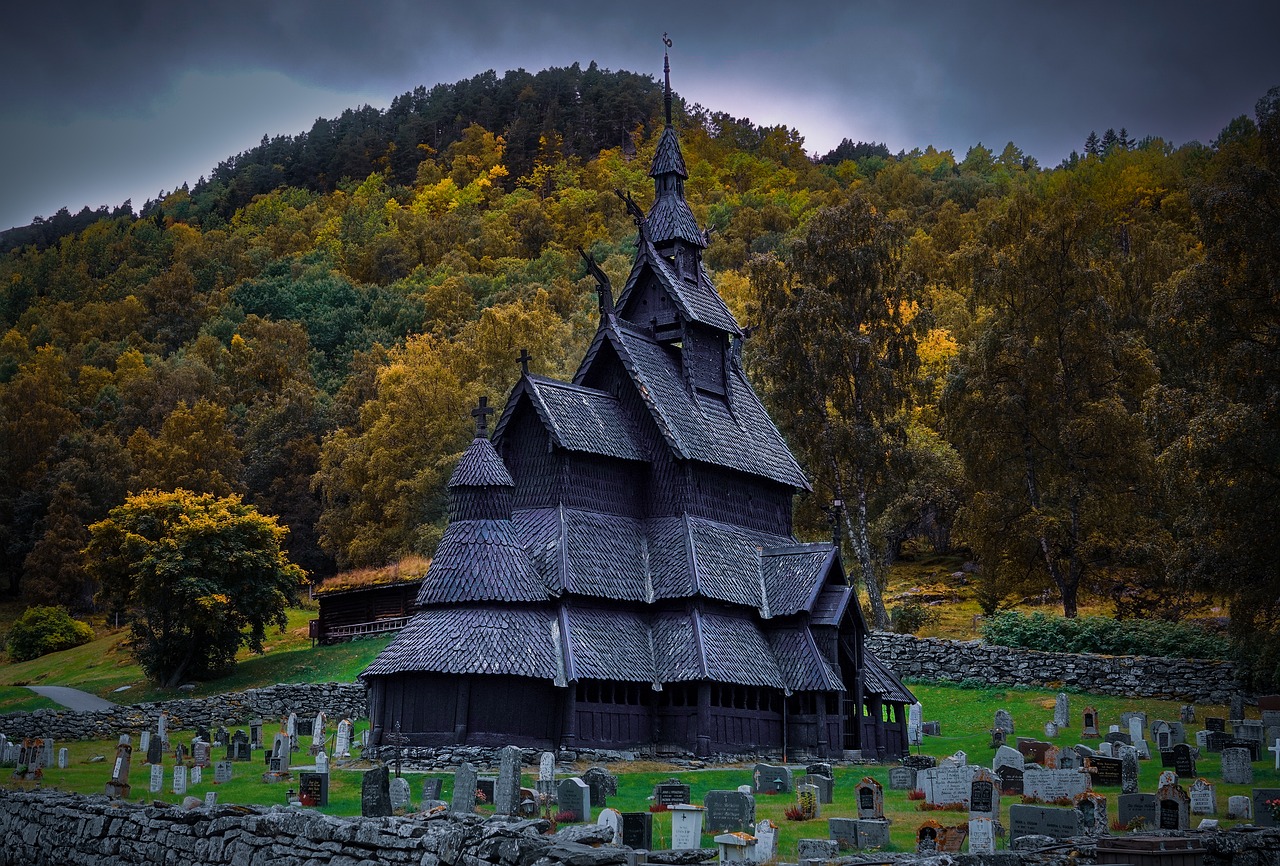
Viking Age Jewelry
Viking Age jewelry holds a significant place in the artistic heritage of the Vikings, reflecting their skilled craftsmanship and cultural symbolism. The intricate brooches, elaborate necklaces, and ornate arm rings crafted by Viking artisans not only served as adornments but also carried deep meanings and stories within their designs. These pieces of jewelry were often intricately decorated with intricate patterns and motifs, showcasing the mastery of metalworking techniques prevalent during the Viking Age.
Symbolism played a crucial role in Viking jewelry, with each piece holding symbolic significance related to Norse mythology, beliefs, and social status. For example, the depiction of animals like wolves and serpents symbolized strength and protection, while intricate geometric patterns represented interconnectedness and balance in the Viking worldview. Jewelry was not merely decorative but a reflection of the wearer's identity, beliefs, and affiliations within the Viking society.
Materials used in Viking jewelry varied from precious metals like gold and silver to more common materials such as bronze and iron. The intricate metalwork techniques employed by Viking artisans allowed them to create detailed and durable pieces that have withstood the test of time, showcasing the enduring legacy of Viking craftsmanship in the field of jewelry making.
Furthermore, Viking jewelry was not limited to personal adornments but also served ritual and ceremonial purposes. Pieces like amulets and pendants were believed to offer protection and luck to the wearer, while elaborate jewelry sets were often buried with the deceased as part of funeral rituals, emphasizing the importance of jewelry in Viking culture beyond mere aesthetics.
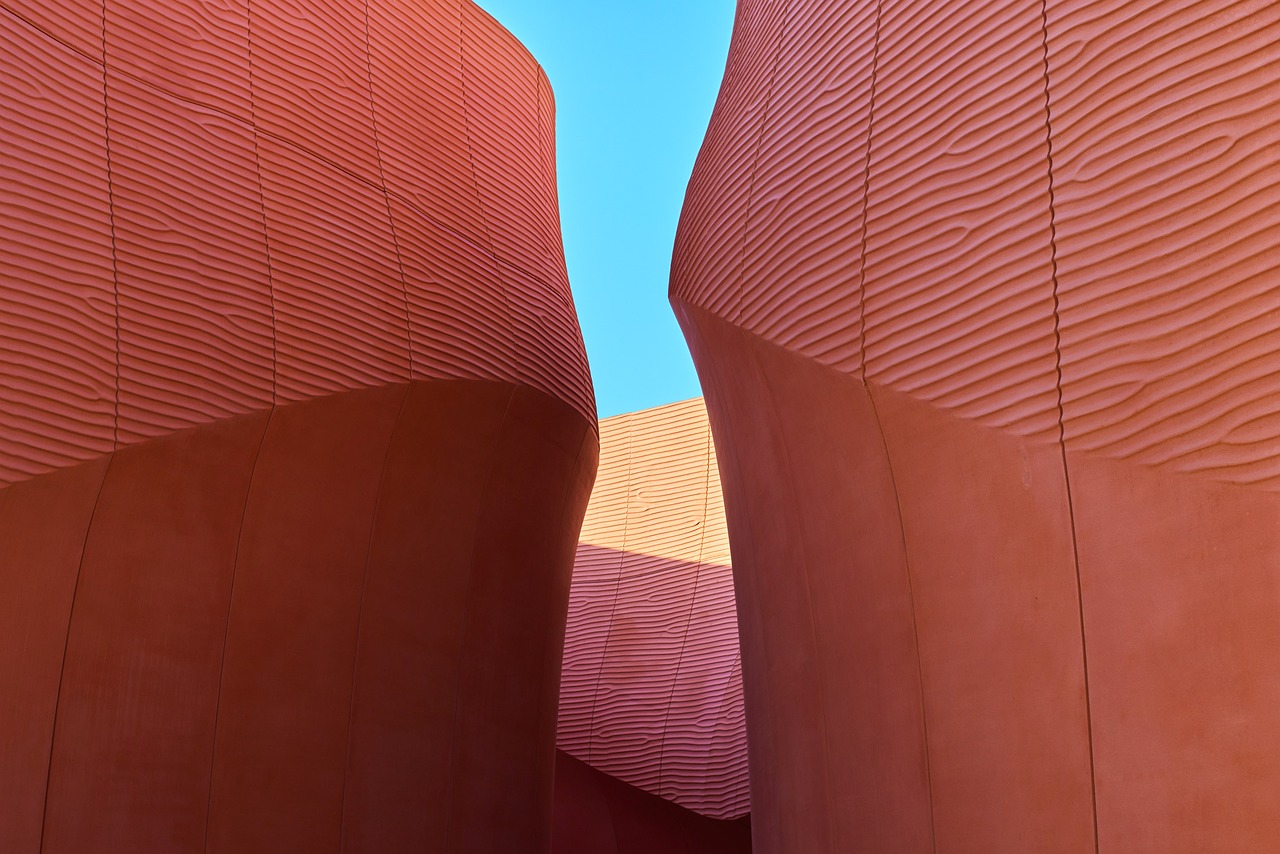
Viking Mythology in Art
Viking mythology is a rich tapestry woven into the art of the Norse people, depicting their spiritual beliefs and epic tales through intricate craftsmanship. From the fearsome god Odin, the wise and mighty Thor, to the mischievous Loki, Viking art vividly brings these deities to life in various forms. The sagas and legends of the Vikings are immortalized in their artwork, offering a glimpse into the mystical world of Norse mythology.
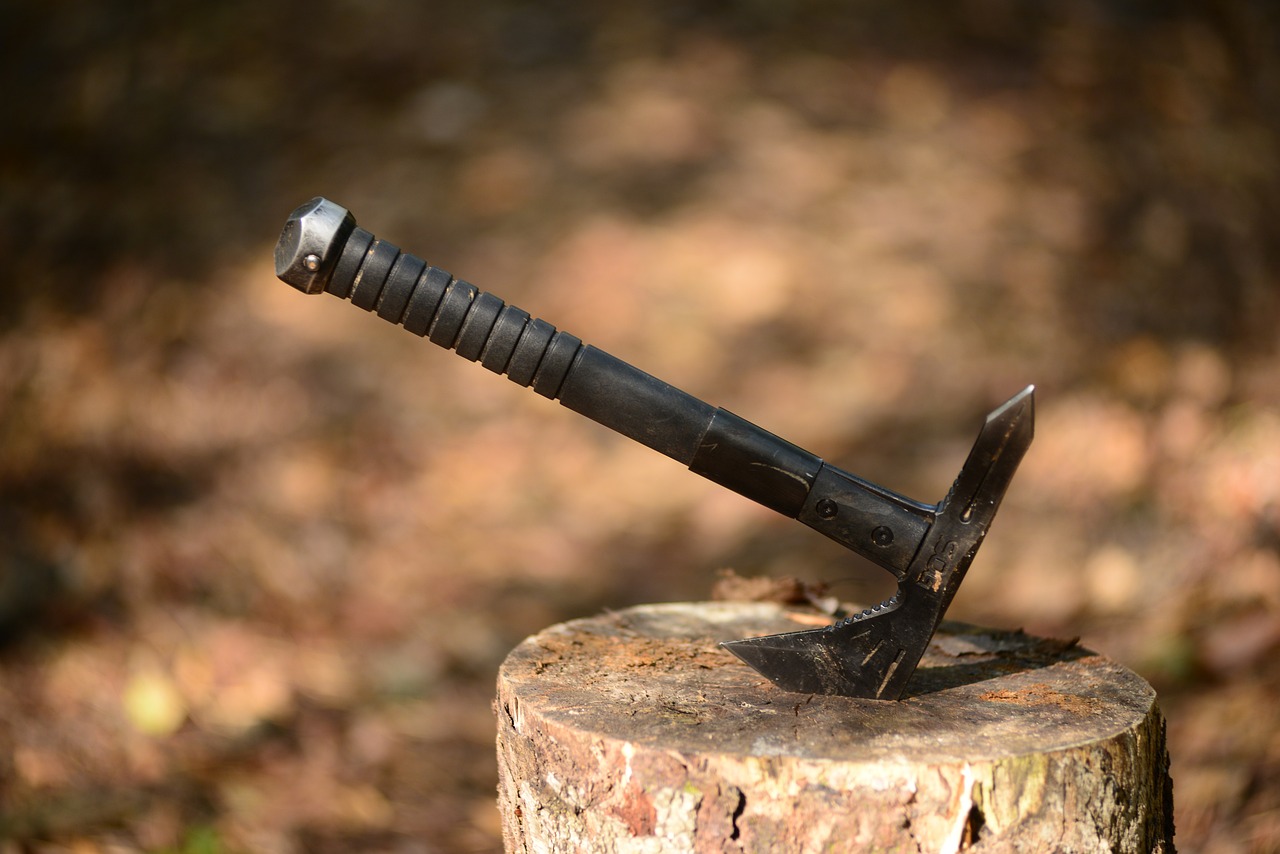
Runes and Inscriptions
Exploring the rich and diverse artistic legacy left behind by the Vikings, including their intricate metalwork, expressive woodcarvings, and distinctive storytelling through art.
Discover the significance of Viking runestones as historical markers and communication tools, showcasing intricate carvings and inscriptions that provide insights into Viking culture and beliefs.
Explore how Viking shipbuilding techniques revolutionized maritime travel, enabling their legendary expeditions and raids across Europe and beyond, showcasing their mastery of craftsmanship and engineering.
Uncover the exquisite craftsmanship and symbolism behind Viking age jewelry, from intricate brooches to elaborate necklaces, reflecting their skilled metalworking techniques and cultural aesthetics.
Delve into the representation of Norse mythology in Viking art, from depictions of gods like Odin and Thor to scenes from epic sagas, illustrating the spiritual beliefs and storytelling traditions of the Vikings.
Examine the use of runes in Viking art and inscriptions, deciphering the ancient writing system that conveyed messages, names, and stories on various objects, shedding light on Viking literacy and communication.
Explore the significance of animal motifs in Viking art, from fierce dragons to majestic wolves, symbolizing strength, protection, and mythical connections in their decorative designs and storytelling imagery.
Appreciate the intricate beauty of Viking woodcarvings, from ornate furniture to detailed architectural elements, showcasing their mastery of woodworking skills and artistic expression in everyday objects.
Unravel the world of Viking textile art, from intricately woven patterns to colorful embroidery, reflecting their craftsmanship in creating garments, tapestries, and other textiles that adorned their homes and bodies.
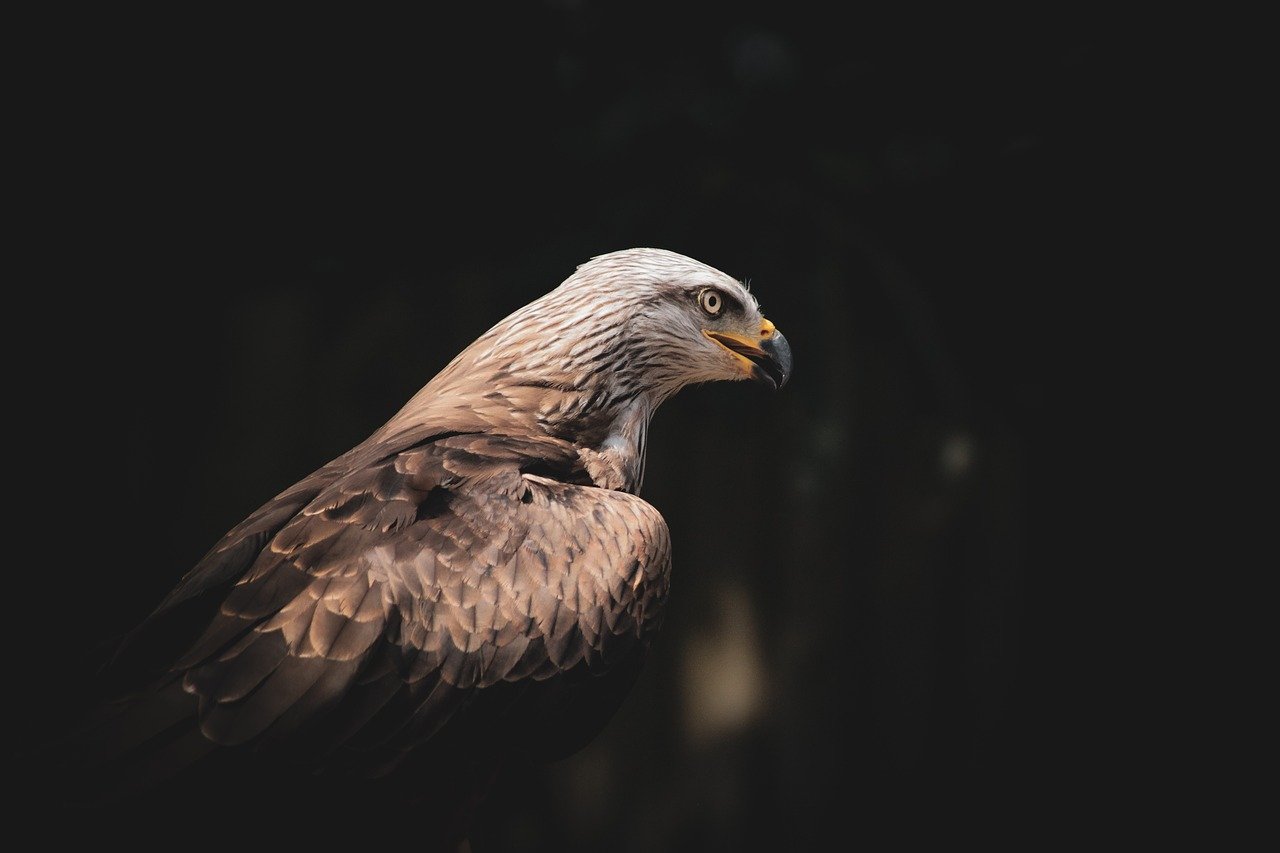
Animal Motifs in Viking Art
Animal motifs played a significant role in Viking art, symbolizing various meanings and connections within their culture. The use of fierce dragons, majestic wolves, and other animals in their artwork reflected themes of strength, protection, and mythical significance. These motifs were intricately incorporated into decorative designs, such as intricate brooches, elaborate necklaces, and even on the hulls of their legendary ships. Each animal depicted in Viking art held symbolic importance, adding layers of meaning to their artistic expressions.

Viking Woodcarvings
Viking woodcarvings stand as a testament to the artistic prowess and craftsmanship of the Norse people. These intricate creations adorned not only their ships but also their homes and ceremonial objects, reflecting a deep connection to nature and mythology. The Vikings utilized woodcarvings to depict a wide array of motifs, from intricate geometric patterns to detailed representations of animals and mythical creatures.
One of the most remarkable aspects of Viking woodcarvings is the level of detail and precision achieved by the artisans. Intricate designs were meticulously carved into wood using a variety of tools, showcasing the skill and dedication of the craftsmen. These carvings often featured intertwining patterns and symbolic imagery, conveying stories and beliefs central to Viking culture.
Woodcarvings were not limited to decorative purposes; they also served functional roles in Viking society. Elaborately carved wooden objects such as chests, bedposts, and ceremonial items were not only utilitarian but also held symbolic significance, representing status, wealth, and spiritual beliefs.
Furthermore, Viking woodcarvings were deeply intertwined with the spiritual and mythological beliefs of the Norse people. Symbols representing gods, heroes, and mythical beasts were commonly depicted in woodcarvings, serving as a visual representation of the rich tapestry of Norse mythology. These carvings played a vital role in storytelling and passing down cultural heritage from generation to generation.
Overall, Viking woodcarvings exemplify the artistic sophistication and cultural depth of the Norse civilization. Through their intricate designs and symbolic imagery, these carvings offer a glimpse into the world of the Vikings, showcasing their reverence for nature, mythology, and craftsmanship.

Viking Textile Art
Viking Textile Art was a vibrant and essential aspect of Viking culture, reflecting their intricate craftsmanship and artistic sensibilities. The Vikings were not only skilled seafarers and warriors but also talented textile artists, creating stunning pieces that adorned their homes and bodies. From intricately woven patterns to colorful embroidery, Viking textiles were a symbol of wealth, status, and cultural identity.
One of the most remarkable aspects of Viking Textile Art was the use of natural materials such as wool, linen, and silk, which were dyed using plant-based dyes to create a rich array of colors. These materials were expertly woven into intricate patterns, showcasing the Vikings' attention to detail and mastery of textile techniques. The resulting textiles were not only functional but also served as a form of artistic expression and storytelling.
Women played a significant role in the production of Viking textiles, with many skilled female artisans involved in spinning, weaving, and embellishing fabrics. These textiles were used to create a wide range of garments, including tunics, cloaks, and dresses, as well as decorative items like tapestries and wall hangings. Each piece of textile art was meticulously crafted, with patterns and motifs often holding symbolic meanings related to Norse mythology and cultural beliefs.
Additionally, Viking Textile Art was not limited to clothing and household items but also extended to sail making for their iconic longships. The sails of Viking ships were often adorned with intricate designs and symbols, showcasing the Vikings' artistic flair even in their maritime endeavors. These sail decorations not only added a touch of beauty to the ships but also served as a form of identification and intimidation during raids and expeditions.
The legacy of Viking Textile Art lives on through archaeological discoveries of well-preserved textiles, providing valuable insights into the craftsmanship and creativity of the Viking people. These artifacts serve as a testament to the importance of textile art in Viking society and its role in preserving their cultural heritage for future generations to appreciate and study.
Frequently Asked Questions
- What is the significance of Viking runestones?
Viking runestones served as historical markers and communication tools, featuring intricate carvings and inscriptions that offer valuable insights into Viking culture, beliefs, and events.
- How did Viking shipbuilding techniques impact maritime travel?
Viking shipbuilding techniques revolutionized maritime travel, enabling legendary expeditions and raids across Europe and beyond. Their mastery of craftsmanship and engineering allowed them to navigate treacherous waters with ease.
- What is the symbolism behind Viking age jewelry?
Viking age jewelry showcases exquisite craftsmanship and cultural symbolism, from intricate brooches to elaborate necklaces, reflecting skilled metalworking techniques and aesthetic preferences of the era.
- How did Vikings incorporate Norse mythology into their art?
Vikings depicted Norse mythology in their art through representations of gods like Odin and Thor, as well as scenes from epic sagas. These artworks provide insights into their spiritual beliefs and storytelling traditions.
- What was the role of runes in Viking art and inscriptions?
Runes were used in Viking art and inscriptions to convey messages, names, and stories on various objects. Deciphering this ancient writing system sheds light on Viking literacy, communication, and cultural practices.
- Why are animal motifs significant in Viking art?
Animal motifs in Viking art, such as dragons and wolves, symbolize strength, protection, and mythical connections. These motifs were prominently featured in decorative designs and storytelling imagery, reflecting Viking beliefs and aesthetics.
- What is notable about Viking woodcarvings?
Viking woodcarvings exhibit intricate beauty and craftsmanship, seen in ornate furniture and detailed architectural elements. These carvings highlight the Vikings' mastery of woodworking skills and artistic expression in everyday objects.
- How did Vikings showcase their textile artistry?
Viking textile art displayed intricate patterns and colorful embroidery in garments, tapestries, and other textiles. This craftsmanship adorned their homes and bodies, reflecting their skill in creating functional yet visually stunning pieces.

